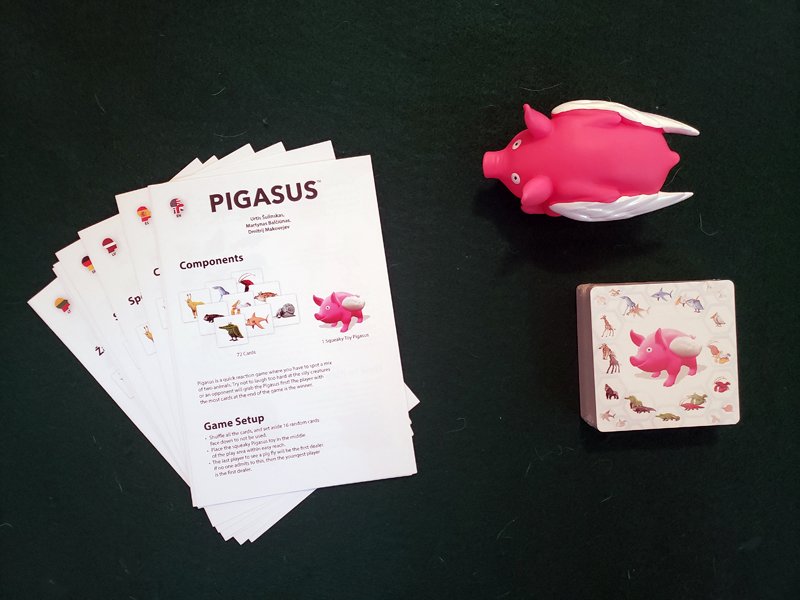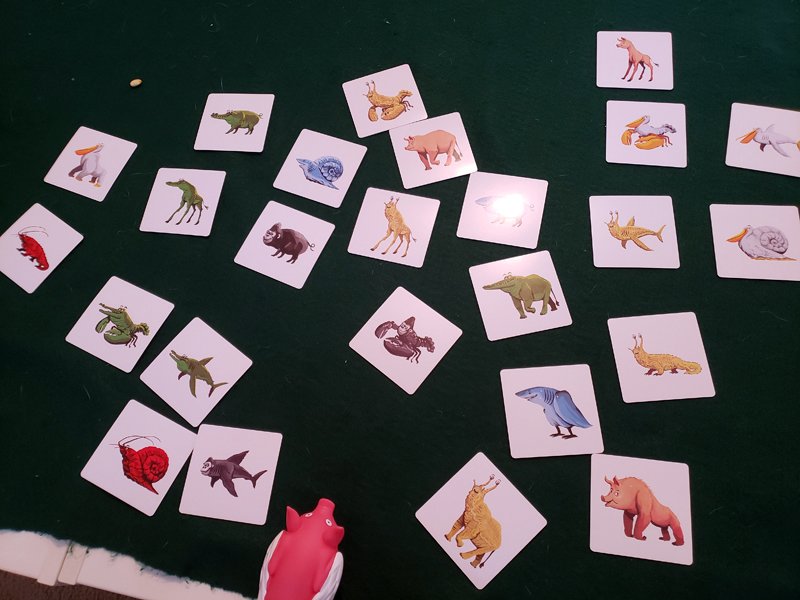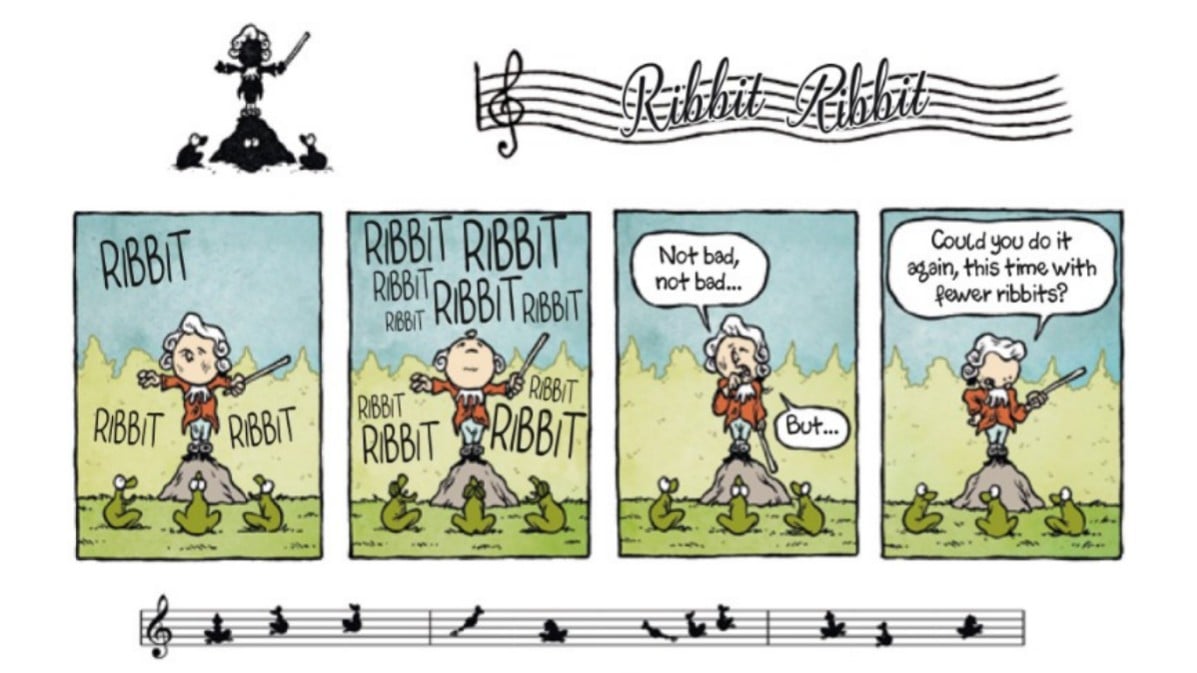
With a kindergartner and a third-grader in our house, we are always on the lookout for fun new family games and the companies that create them. Recently I found out about Pigasus, a matching game with a twist from Brain Games and took up an opportunity to accept a copy for reviewing.
What Is Pigasus?
Pigasus is a variation of a matching game involving imaginary hybrids of well-known animals for 2-8 players ages 7+ and takes about 20 minutes to play. It has an MSRP of $14.99.
Pigasus Components

Pigasus contains the following:
- 72 Cards
- 1 Squeaky Pigasus Toy
- Instruction Books in Several Languages
I have seen thicker cards made in other games, but for Pigasus, the thickness level is probably going to be fine unless younger players are particularly rough on the cards. The Pigasus squeaker itself is decently solid rubber and makes a good solid squeak. My only warning is that if you have a kid that gets fussy about loud sounds, the squeaker might be a touch loud for them and you might alter your gameplay to grabbing and not squeaking the Pigasus.
How to Play Pigasus
Goal

The goal of Pigasus is to match the most animal hybrids, but the cards are not perfect matches. For example, the Shark/Pelican combo has one card with a shark head and a pelican body, but its match has a pelican head and shark body.
Setup

The setup for Pigasus is simple and fast, a trait I usually prefer in family games, especially those kids might be inclined to play on their own. Shuffle the cards (it’s especially important to get them mixed up well after you’ve played the first time) and set 16 of them aside, with the rest making the Game Deck. The Pigasus Squeaker is then placed where all the players can easily reach it.
Gameplay
The gameplay mechanic is easy and straightforward, but is still going to need your alert attention.
Dealer
Pick a player to be the first Dealer. The Dealer takes the Game Deck and starts revealing the cards one by one. The Dealer is supposed to flip them away from themselves so they don’t get a sneak peek and the cards are placed in front of everyone. The Dealer should take care not to cover one card with part of another. If a player or the Dealer believes they see a match, they grab or squeak the Pigasus Squaker and point out the match. Note that touching the Pigasus Squeaker at all is considered a grab. If two players grab it at the same time, the player touching the larger section gets it. If the players are touching equal sections and are both are pointing to the correct match, they each score a card. Any disputes are solved by player majority.

Right Grab
If the player is correct, they claim the matched pair and become the next Dealer.
Wrong Grab
If the player incorrectly identified a match, they must surrender one card from their pile for each player in the game back to the box. The Dealer is not changed.
Game End
The game ends when the deck runs out. The player with the most cards wins. If there is a tie, the 16 cards set aside come into play for the tied players only and the moment someone scores, they become the winner.
Why You Should Play Pigasus
Pigasus is a fast, fun family game that is easy to set up, easy to learn, and a little more challenging than you might realize. While the game mechanic is simple, you’d be surprised how much active thinking and recognition you need since the objects are not matched and aren’t things you would instantly associate with each other. If you see an elephant head and a shark body, you really have to scan the cards to recognize if a shark head and elephant body came up. The giraffe and elephant bodies caused the most confusion because of the tails on a quick glance. I didn’t feel like I had an advantage over my eight-year-old, and our final scores ran pretty close.
It might be a game a little trickier to fudge the minimum age, as you do need to be able to process and recognize unusual pairs. There is a team option that might help include younger players. When we let our five-year-old play, we agreed not to penalize him for a wrong grab as long as he wasn’t constantly making wrong grabs.
Overall, gameplay ran faster than 20 minutes for us, and it was enjoyed enough that it got played multiple times in a row, which is always a good sign. It was easy enough for the kids to play, but still challenging enough that I wasn’t bored playing it.
At $14.99, it’s in that super affordable and nicely giftable price range for other kids too. Brain Games originates in the Baltics, but has expanded to the United States. US buyers can order their copies through one of the distributors found here.



